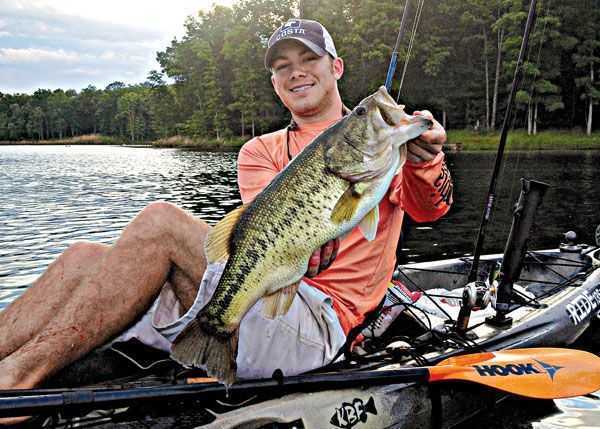Today’s enormous selection of fishing kayaks is indicative of the sport’s popularity and growth. Fishing kayaks serve a utilitarian role and perform well in differing environments. But with so many choices, there are several factors that will help you choose the best kayak for bass fishing.
How You Fish
Consider the type of fishing you intend to do. If you intend to use your kayak for species other than bass, think about how and where you will be fishing for those species and what type of boat will suit those needs as well. Also, what types of presentations do you plan to use? For example, flipping or pitching are techniques that require standing and therefore you should limit your selection to wider, more stable kayaks that allow you to stand comfortably. You can’t fish effectively if it is taking every ounce of concentration that you can muster just to stand in the kayak. Choose a model that provides a compromise of stability, comfort and performance and you will enjoy its use and spend more time on the water.
Where You Fish
The type of water you will be fishing is another important determiner of boat type. As a general rule, a long, narrow kayak is better for covering longer distances and a short, wide kayak is more maneuverable and stable. So choose a longer boat for crossing big lakes and bays or heading offshore, and a shorter kayak for rivers, ponds and other small bodies of water.
Sit-On-Top vs. Sit-Inside
You will be presented with the choice of either a traditional sit-inside kayak, SINK, or a sit-on-top kayak with an open cockpit, a SOT. While both can be used for bass fishing, I use sit-on-top kayaks exclusively. I believe that they are far superior for fishing applications. The flexibility of rigging, ease of entry and exit, multiple sitting (and standing) positions, minimal skill requirements, safety, and capacity and accessibility of gear storage are the primary reasons. With proper clothing, the sit-on-top can be fished year round in the harshest conditions.
Paddle vs. Pedal
Some manufacturers also offer the choice of a pedal-drive. While this has the appeal of leaving your hands free to fish while you pedal with your feet, I fish extremely shallow water and commonly encounter thick vegetation and submerged structure that are impassable by pedal-drive kayaks. For that reason alone, I choose to paddle and avoid pedal-driven kayaks. I also prefer to have the space usually dedicated to the various drive systems available for mounting accessories such as depth finders, rod holders and GPS units. Pedal driven kayaks offer the advantage of maintaining position in current, having your hands free for casting and using larger muscle groups. Range can be extended through the use of a pedal drive kayak as well, especially when you first begin to fish from a kayak.
Try Before You Buy
Once you’ve narrowed down your selection, visit a pro shop in your area and make sure you take advantage of demo days or other opportunities to actually paddle the kayak you think is right before you buy it. Although hull and cockpit design, length, width, weight and rigging options are all important factors, it’s always important to consider how the kayak complements your particular body type. You don’t want to end up looking like a gorilla on a tricycle because you bought the smallest kayak available just because it fit in the bed of your truck. Buying the right kayak the first time will ensure your comfort and enjoyment of the sport while saving you money in the long run.
Chad Hoover is a passionate and accomplished kayak angler who targets trophy largemouth bass on rivers, lakes and backwaters across North America. He authored Kayak Bass Fishing and co-owns and operates HOOK 1 Kayak Fishing Gear and KayakBassFishing.com.
[easy-social-share]
